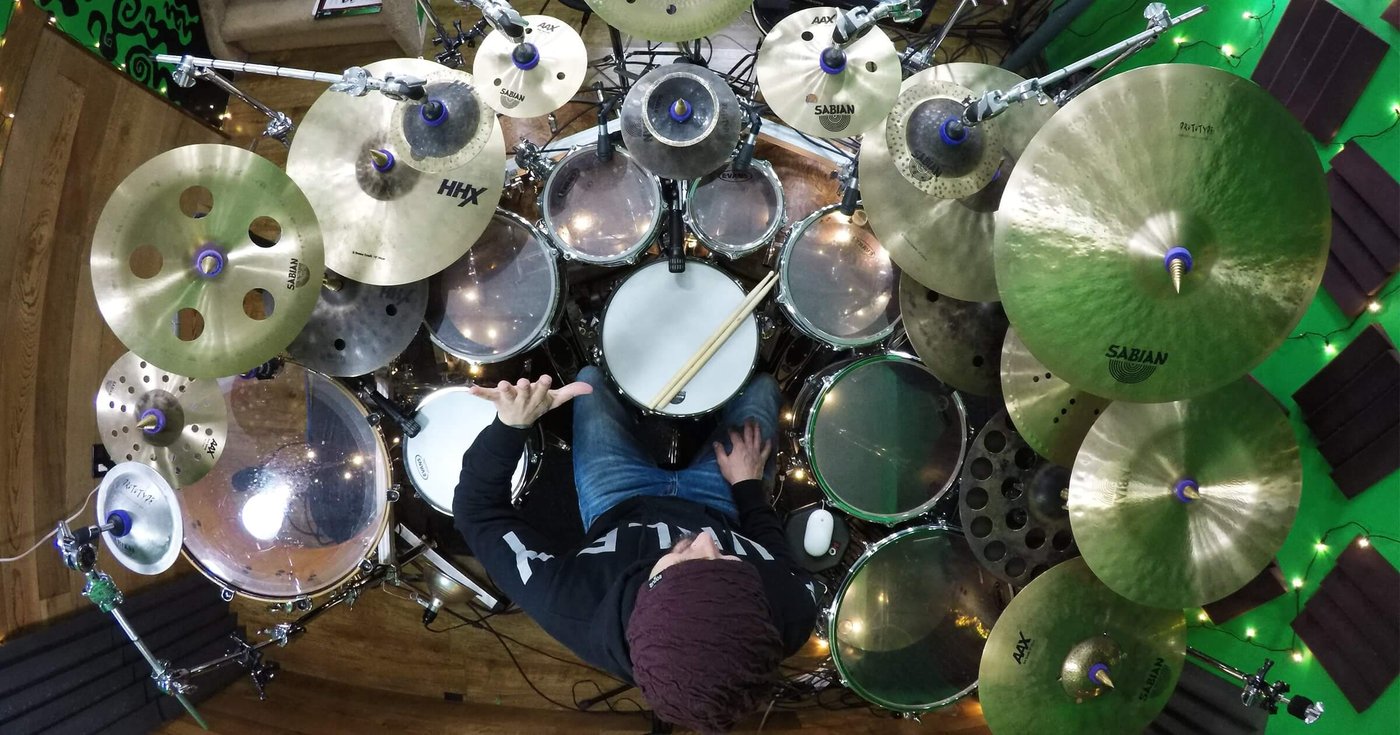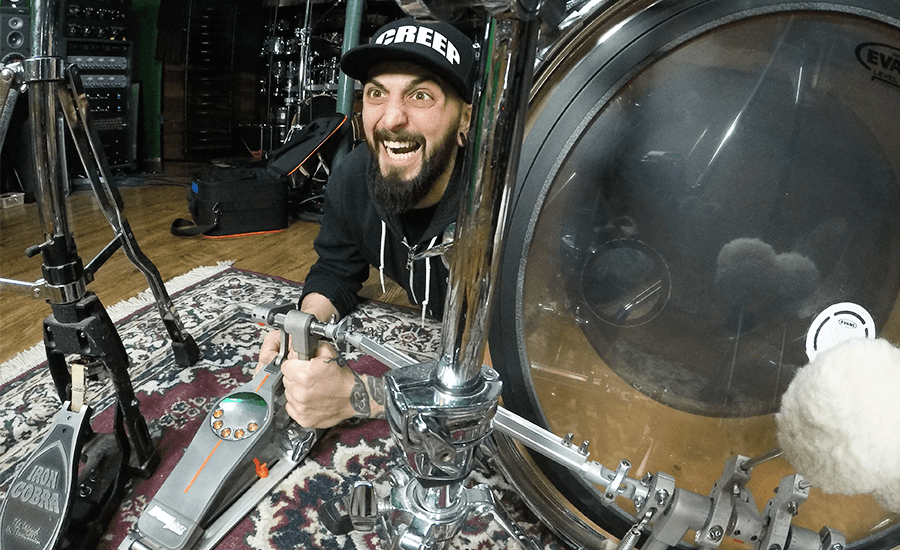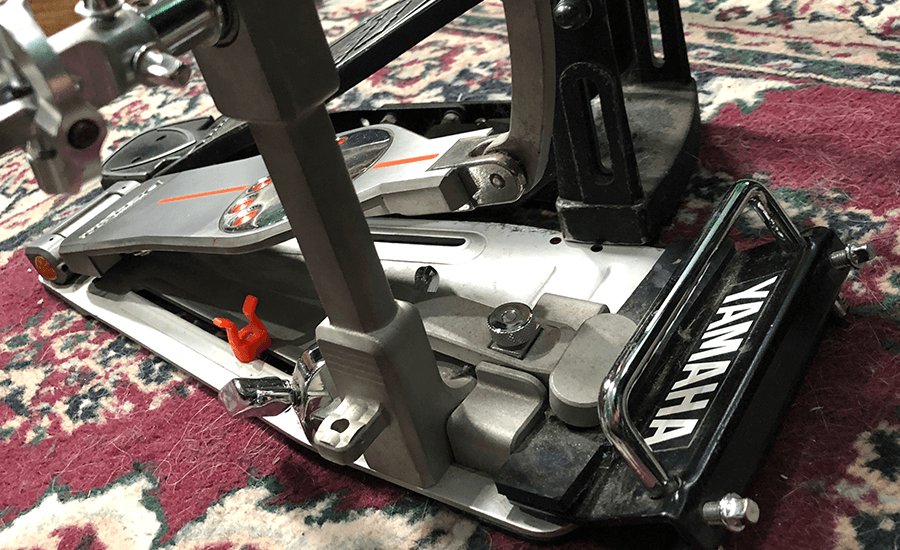
It’s a double kick drummer’s worst nightmare.
You launch into the fifth song of your set and things are going great. The crowd is pumped, you’ve already pulled off a handful of tricky sections successfully, but then the bridge hits. You’ve got a long section of haulin’ double bass ahead of you!
The first few bars go great, then all of a sudden your beat starts to sound lopsided. The left notes are getting quieter!
When you look down, you realize you’ve pushed your slave side of the double kick pedal a few inches further forward than you like it.

If it slides much further, the crossbar is going to start grinding into the bass drum hoop. Worse yet, the notes are getting progressively more difficult to execute and will soon be impossible. If you’re lucky, you’ll make it through the section and can then pull the pedal back to where it belongs. There’s always the danger that things can go worse, pulling the player out of time and possibly even train wrecking the song!
When this happens it can be a frustrating and sometimes humiliating situation to deal with. Thankfully, there are a number of great solutions to this problem!

Most pedals have little spikes stock from the factory. Unfortunately, they’re rarely strong enough to stay in position under heavy double bass playing. The zero-cost solution isn’t really a solution, but it can help in a pinch. You can strategically set up your crash stand so one of the feet sits snugly against the front of your slave pedal. This works best if the leg is pointing directly toward the pedal. If it’s on an angle, the cymbal stand will rotate away and your pedal will still creep! Any heavy object will do. A cinder block is another way to accomplish the same thing.
Beyond that, the least expensive way is to go to the hardware store and buy some industrial velcro strips. The great thing about these is that they’re really thin, so it’s easy to stick them to the underside of your pedal without really noticing them. You don’t need to cover the bottom fully, just under the front and maybe down the sides in an upside-down “U” shape. It should be noted that this only works if there’s a carpet.
Pro tip! Have a drum rug that lives with your live kit in case of emergencies.
There is a cool product if you’re not able to set up with a rug called “Kick Strap”. As the name suggests, it connects your kick pedal to your seat post with a heavy-duty strap. You can also use this for your hi-hat stand and adjust it to whatever length is right for you.
The solution that I use when I’m playing double pedal is what’s called a “pedal anchor”. It’s a large pair of heavy steel spikes which attach to the hoop clamp on the front of your slave pedal. Some double pedal slaves don’t come with this from the factory, so you’d need to order the hoop clamp as well for this to work. I’ve been using the Yamaha P80-SA for decades. They’re incredibly solid and work perfectly! That particular model is no longer in production, but you may get lucky on eBay. Pearl, Dixon, and a number of other companies make a similar product.

Any of the above methods should be able to help you avoid double bass disasters! If you want to get your MacGyver on, you could always try multi-clamping some dumbbells to a cymbal stand and positioning them in front of the slave pedal. You could try literally gaff taping your pedal to the ground. Better yet, you could commandeer the help of an eager fan to sit on stage and physically hold it in place for the most up-close-and-personal band experience!
*This article contains affiliate links, which means we might earn a small commission from the product seller if you make a purchase. For more info, check out our privacy page.
Aaron Edgar is a dynamic and innovative drummer renowned for his technical prowess and creative approach. With a career spanning over a quarter century, he has significantly impacted the drumming community as an educator, performer, and author. His work with the progressive metal band Third Ion showcases his ability to blend intricate rhythms with powerful grooves. Aaron's contributions to drumming education are extensive, including over a dozen years at Drumeo, his role as a columnist for Modern Drummer, and his instructional book "Progressive Drumming Essentials" Additionally, he served as Editor In Chief of Drums Etc. magazine and is a sought-after clinician worldwide. Aaron's passion and dedication continue to inspire drummers of all levels, solidifying his place as a leading figure in modern drumming.


By signing up you’ll also receive our ongoing free lessons and special offers. Don’t worry, we value your privacy and you can unsubscribe at any time.
We use cookies for traffic data and advertising. Cookie Policy »